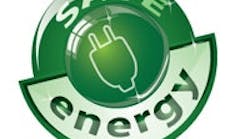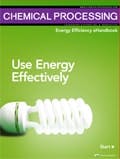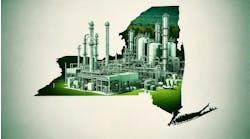Effective energy management can help achieve more efficient use of energy without reducing production levels, product quality or employee morale, and without compromising safety and environmental standards. It should not only address higher-efficiency generation, energy conversion, distribution and utilization, but also explore lower-cost energy alternatives. Simply put, energy management is optimizing the energy cost per unit of product output.
CP eHandbook: Use Energy Effectively
Effective energy management can help achieve more efficient use of energy without reducing production levels, product quality or employee morale, and without compromising safety and environmental standards. Download Chemical Processing's Energy Efficiency eHandbook now.Energy management is a proven tool; during challenging economic times, this competitive edge can help plants survive. When economic conditions are favorable, energy management can further boost the plant's profitability. The best energy management programs essentially cover the following five activities:1. Analysis of continuous energy supply (its cost, alternatives and flexibilities to energy supply) and an energy-efficient layout. Both long- and short-term use of continuous energy should be evaluated. Consider the infrastructure costs of large-scale transportation of fuels. Selection of fuels should also be based on long-term sustenance. In addition, a compact layout and optimized manufacturing processes can reduce material handling, energy costs, and in come cases, capital needs. Evaluate and install energy sources closer to energy "users." For example, in a power-intensive process such as graphite manufacturing, furnace bases are located as close as possible to the rectoformer housing. In a steam-intensive units, like ammonia plants, all process equipment and steam generating boilers are located in a compact manner to minimize distribution losses.2. Identify and incorporate energy-efficient process technologies and devices. Evaluating the energy cost per unit of product output has a significant impact on a plant's operability. For example, membrane cell technology for chlor-alkali plants is significantly more energy efficient than earlier diaphragm-type electrolytic cells. Membrane cell technology uses lower voltage across the electrodes of the cell, consuming 20% less electricity — about 2,800 kWh/ton of chlorine production, while the diaphragm cells consume nearly 3,500 kWh/ton of chlorine. Also, steam use to evaporate the caustic lye is substantially lower in membrane cells compared to diaphragm cells. Hence, many chlor-alkali manufacturers have modernized their units, replacing the diaphragm cells with cells using the membrane technology.3. Identify and incorporate energy-efficient operating practices and methods. Where applicable, energy-efficient retrofits may be necessary to take advantage of technological developments. Installing economizers and combustion air preheaters to fuel-fired furnaces and boilers, and adding blowdown heat recovery systems to medium-sized boilers are common retrofits. In addition, providing additional energy-efficient operating guidelines is an effective way to reduce energy costs.[pullquote]It's also necessary to evaluate and compare the energy efficiency of actual operating conditions to design efficiency conditions. Market conditions always dictate load factors, and partial load operations may have become the norm for some operations. In such situations, significant energy-efficiency losses can be eliminated with retrofits like variable frequency drives for electric motors. 4. Add metering, control and automation features for improved energy productivity. Metering of critical parameters and energy use may not result in energy savings directly, but it helps save energy when combined with process control and automation. Automation and control features ensure higher efficiency by avoiding over-heating, excessive compressing and cooling. 5. Evaluate the "lifecycle costing" of technical processes and equipment. Be sure to review the lifecycle cost instead of looking only at the first cost. I have seen plants that choose less-expensive electric motors, less-efficient transformers and low-cost steam traps. A steam trap worth $150 can leak steam worth $1,000/year. Similarly, a $900 electric motor can consume $3,000/year worth of electricity. Even marginally higher-efficiency electric motors and transformers can save enough electricity to justify their increased first cost within the first couple of years. The same goes for an incorrectly selected steam trap that could leak steam and condensate worth more than its purchase price within a few months. Hence, lifecycle costing is an essential energy management activity.
Remember, the objective of energy management isn't to simply reduce variable energy costs without compromising productivity and product quality, but also to increase the involvement and awareness of all team members associated with the activity and the relevant manufacturing process.



